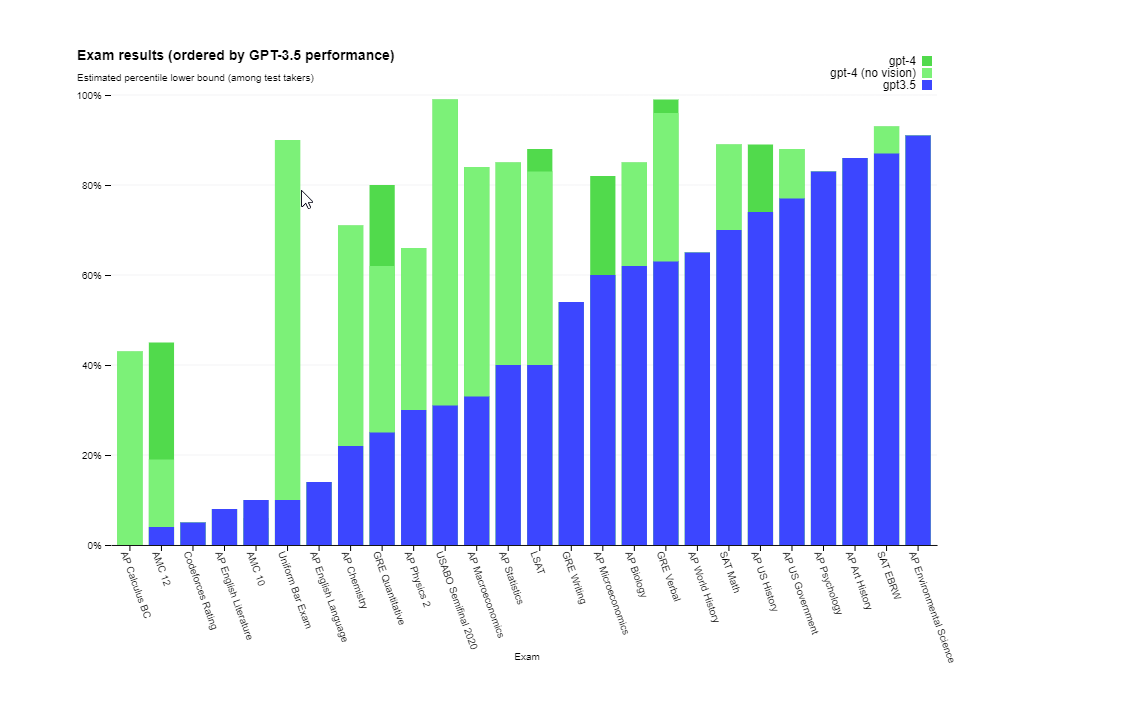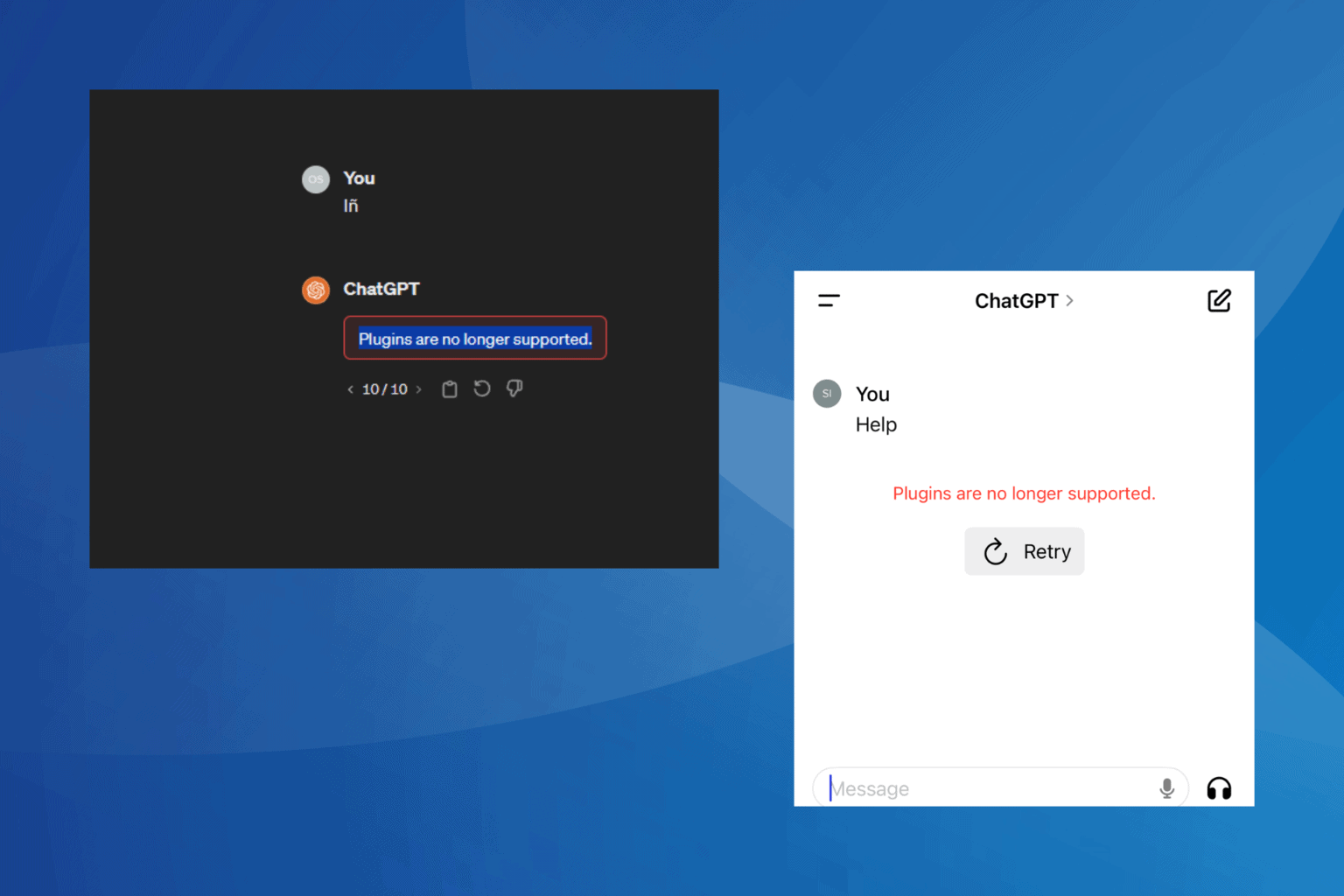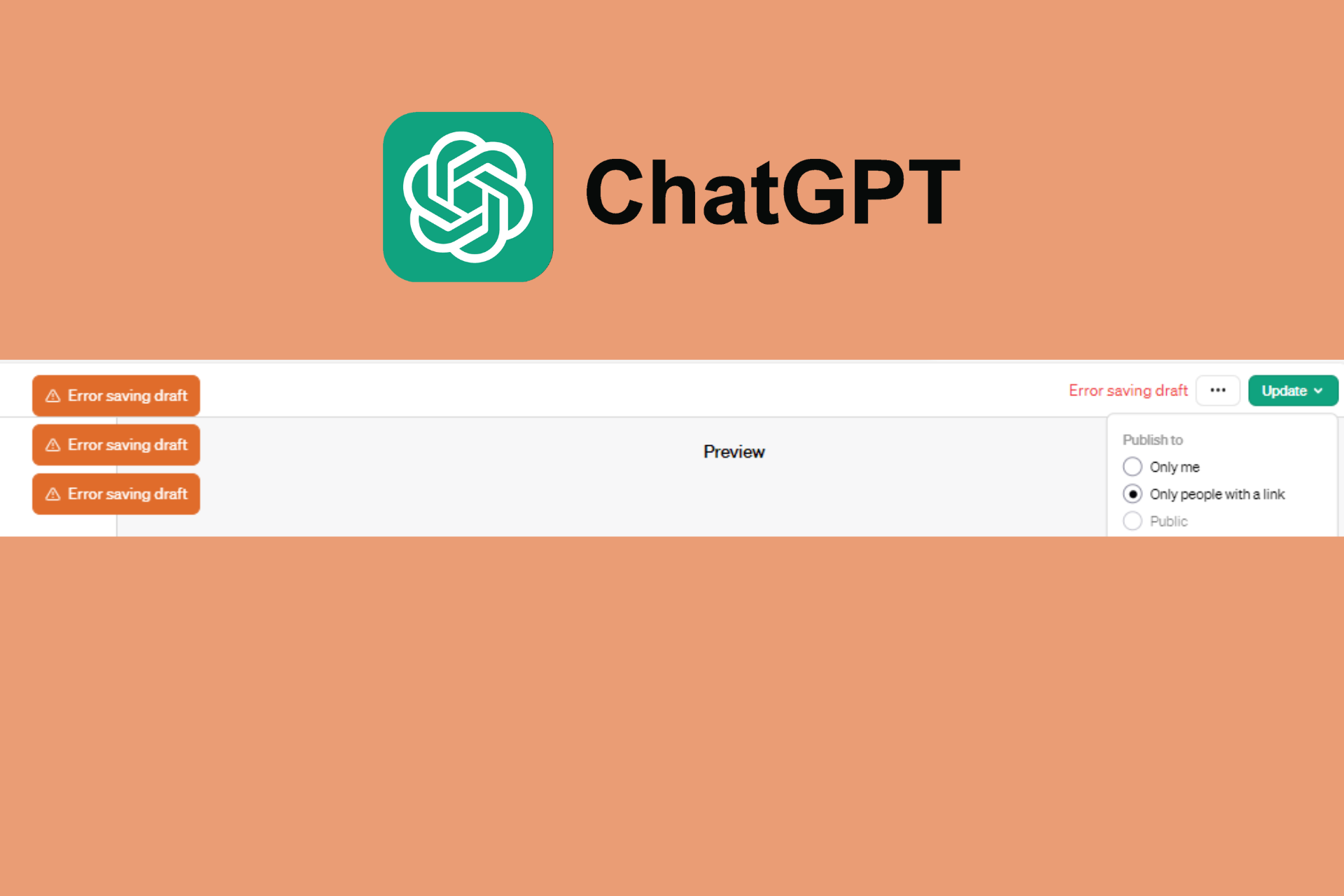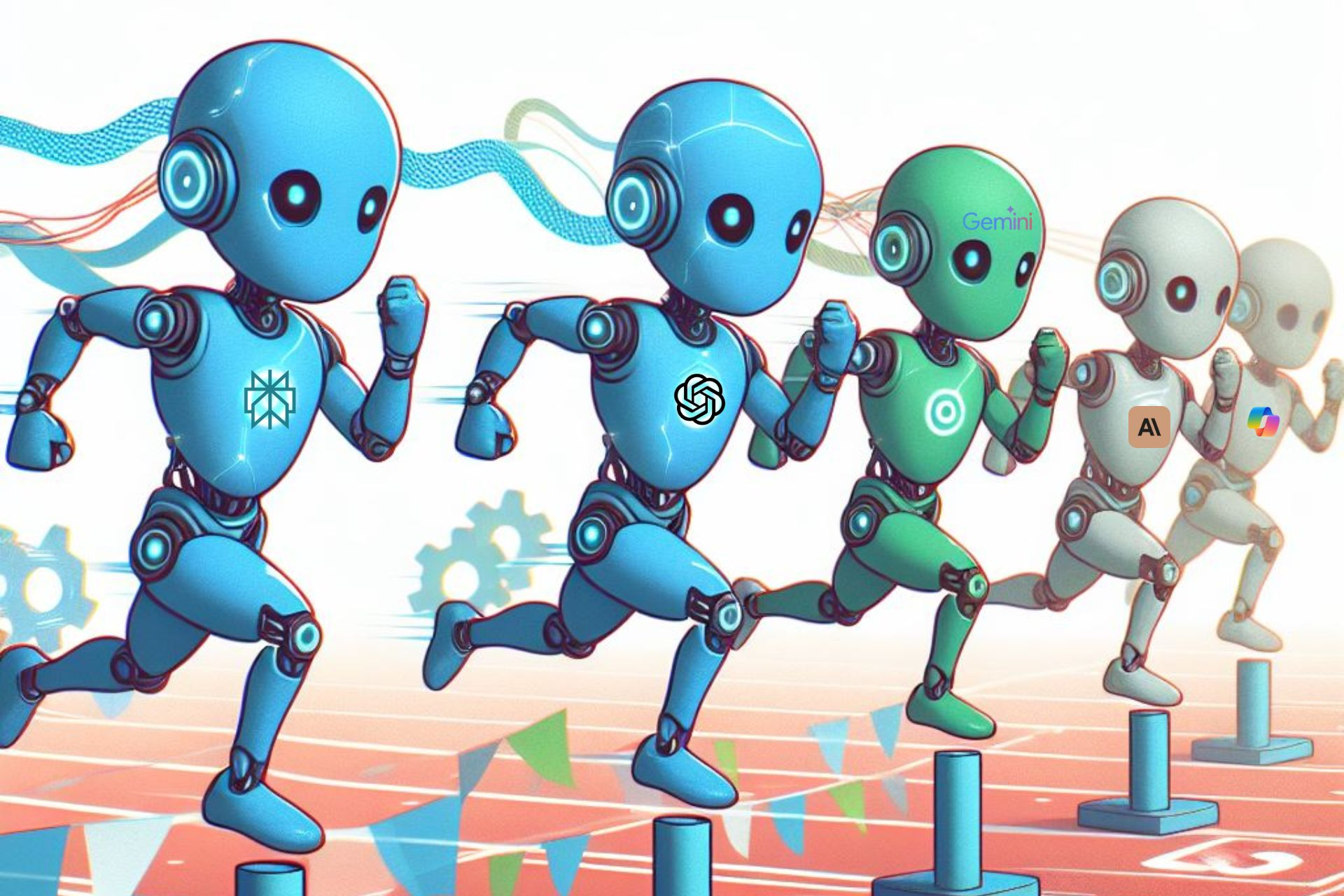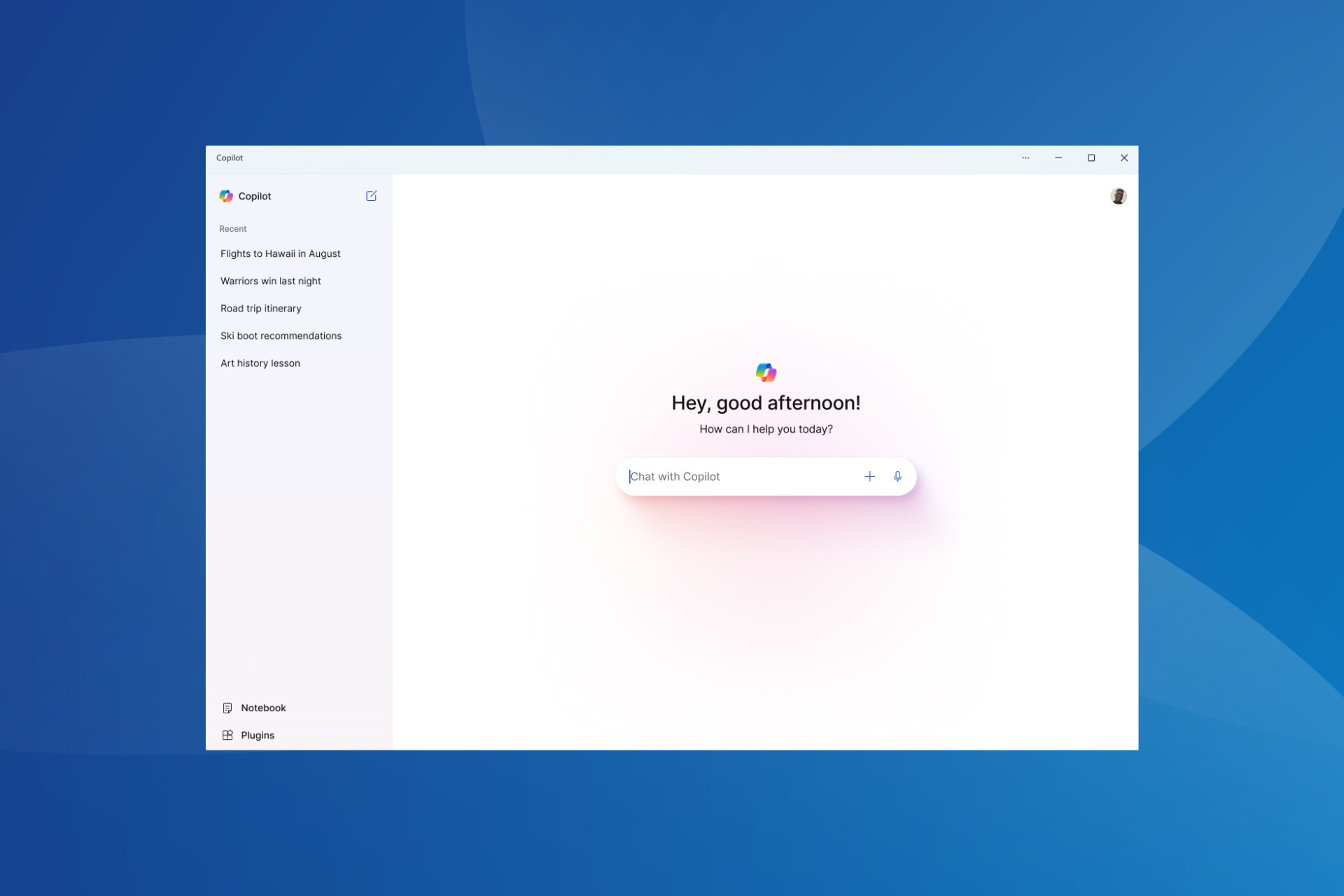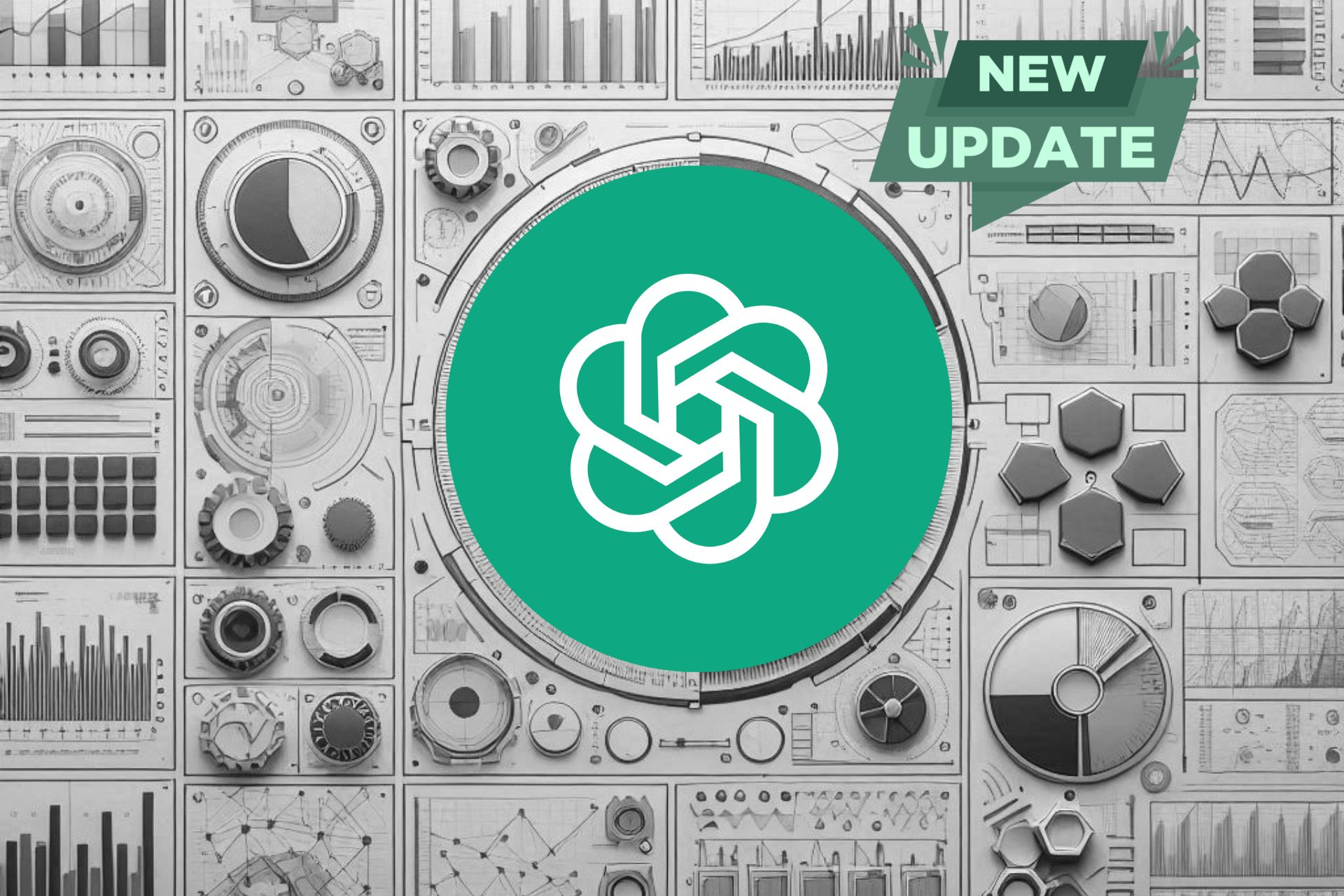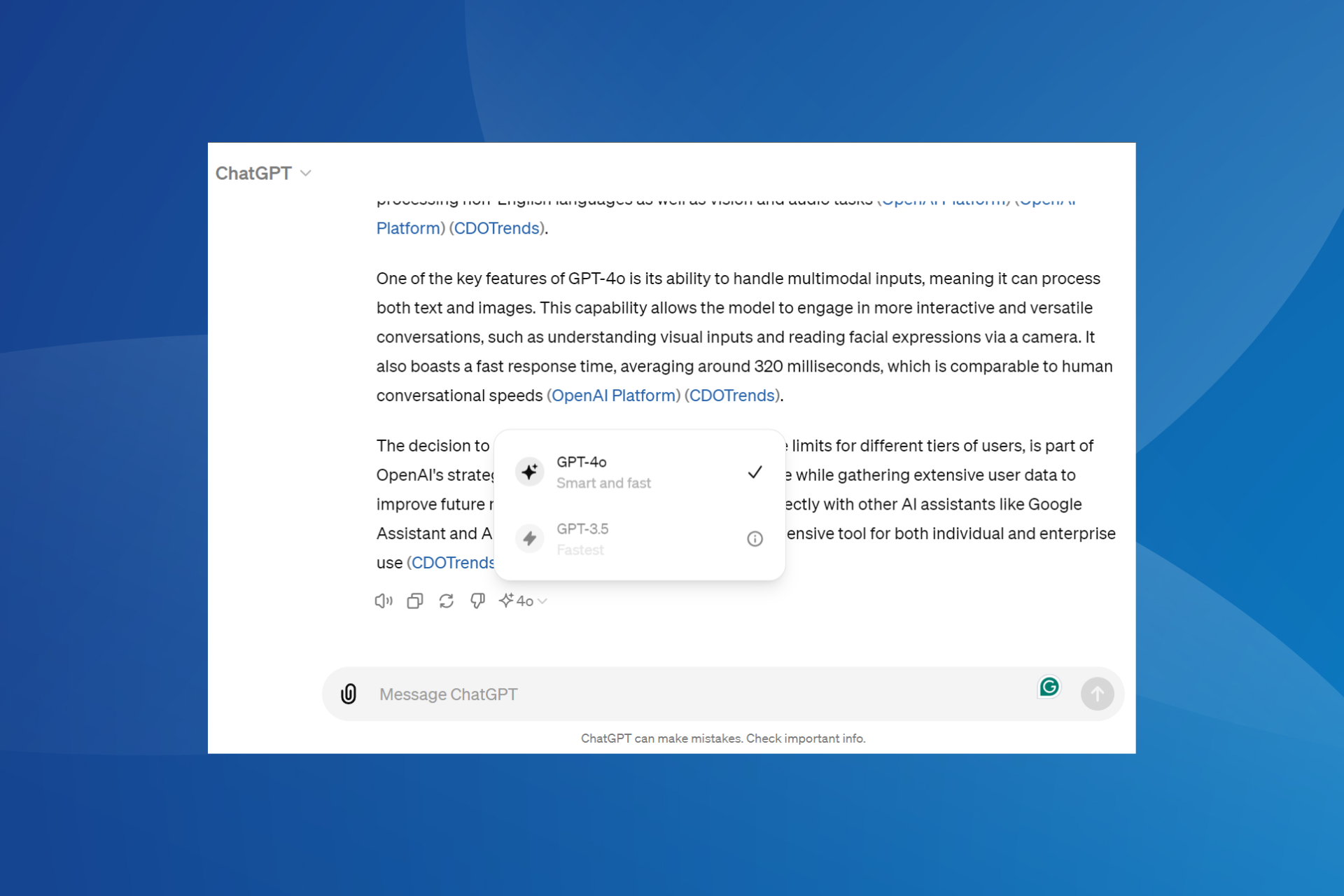ChatGPT 4 vs. ChatGPT 3: What's New & How Can It Help You?
Explore the new featuers of Chat GPT-4!
6 min. read
Updated on
Read our disclosure page to find out how can you help Windows Report sustain the editorial team Read more
Key notes
- ChatGPT 3, launched in 2020, was trained on a larger dataset and is faster than GPT 2.
- The latest model, GPT-4 released on March 14, 2023, and is claimed to be much safer and have 40% more accurate responses.
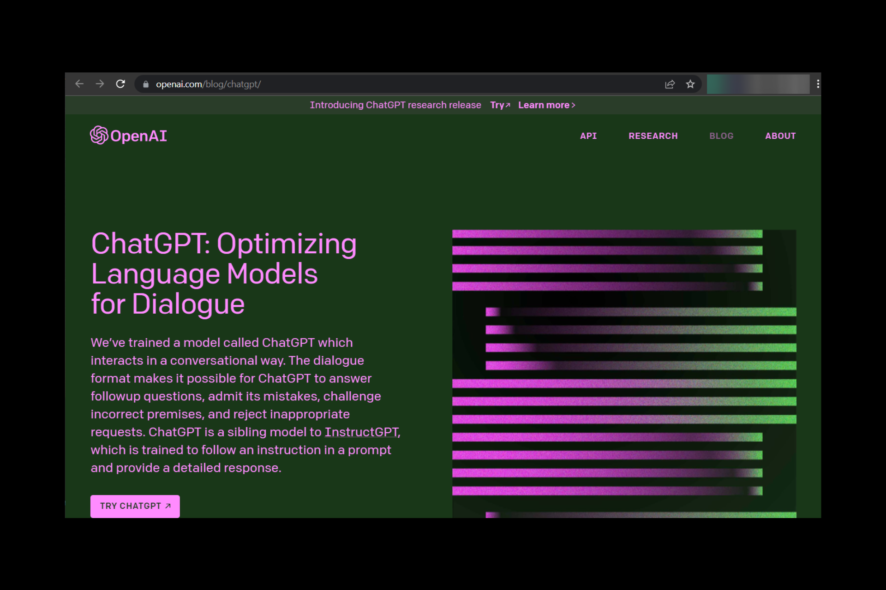
ChatGPT 3 has become popular as many people use the platform to find solutions for daily problems and technical issues.
The model is trained on a massive text dataset and can produce human-like responses. Now OpenAI has released GPT 4 on March 14, 2023.
In this guide, we will discuss the difference between ChatGPT 4 and ChatGPT 3, what we can expect, and how it can be helpful for users.
Is GPT-4 better?
In a recent podcast interview, CEO Sam Altman hinted that OpenAI is working on a multi-modal model, and now that GPT-4 has launched, it is claimed to be faster, more reliable, more creative, and more accurate than its predecessor.
What’s new with ChatGPT?
With GPT-4, ChatGPT is now ChatGPT Plus, supports more parameters, and can deliver faster responses. ChatGPT Plus is available to a limited number of users and is the only way to access ChatGPT-4.
The updated version now provides more accurate answers to tough questions and can take visual input.
It will be available for customers willing to pay $20 a month, including taxes. To be able to use ChatGPT Plus, you need to fill out a form by OpenAI, which will put you on a waiting list.
What is GPT 4 capable of?
GPT-4, as expected, is a multi-modal large language model, which implies it responds to both text and images. For example, you can upload photos of your fridge content and ask what you could make; GPT -4 will suggest the recipes according to the pictures.
OpenAI tested this model on various benchmarks, including simulated human exams, and it performed better than the existing models, as you can see below.
It works well in both popular known languages, such as English, and low-resource ones, including Welsh, Latvian, and Swahili.
How many parameters does GPT 4 have?
Earlier, it was suggested that GPT 4 would also be a smaller model with 175 billion parameters. It will generate text, translate language, summarize text, and answer questions at a faster rate.
Now that GPT 4 has been released, it claims to be faster and better. However, there is still no news on how big the parameters are, and it looks like the company is keeping this information to itself for now.
What is GPT 3 unable to do?
GPT 3 is restricted to language and can’t respond to images and sound. Also, it doesn’t have common sense knowledge and can’t learn to reason based on that knowledge.
ChatGPT 4 vs. 3: What is the difference?
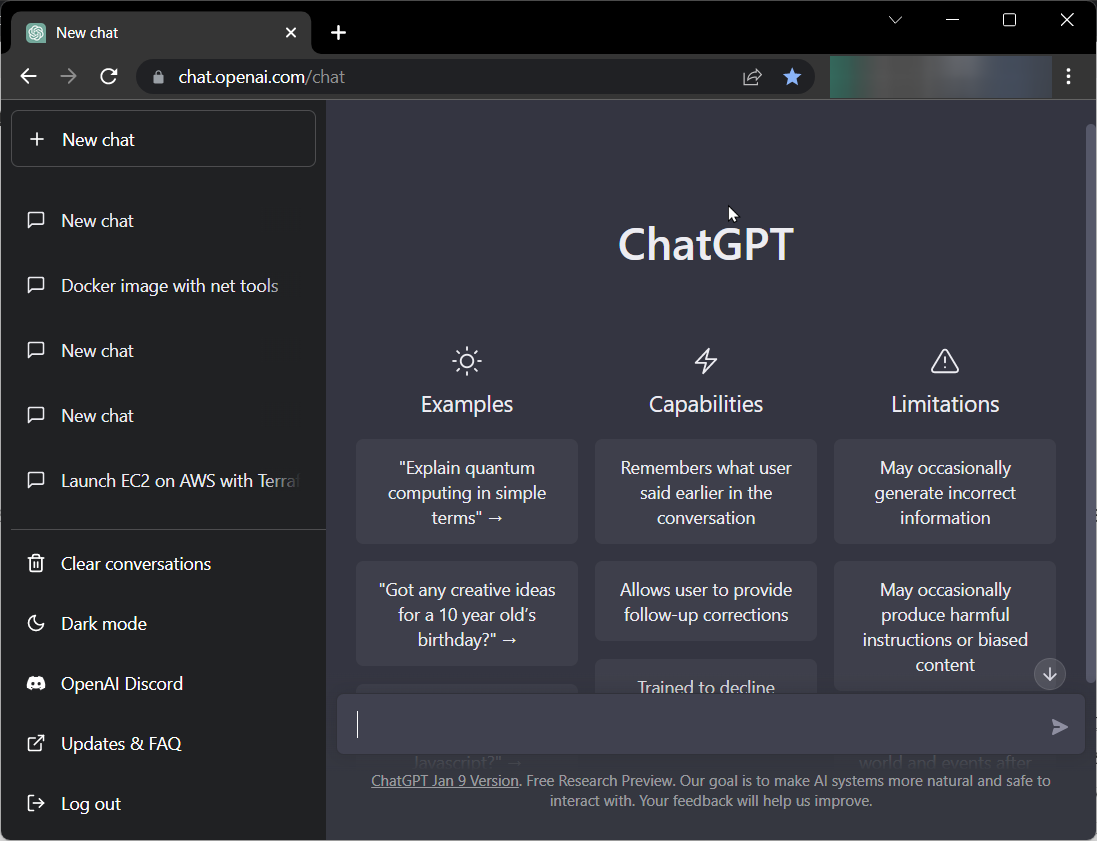
AI is evolving as we speak, and companies are working towards making artificial intelligence more useful for humans; ChatGPT is another example.
ChatGPT-4 might have a larger dataset and an equivalent number of parameters. The successor to ChatGPT-3 can generate human-like responses, creative writing, code, structured writing, and more at a much faster rate.
Let’s discuss how ChatGPT 4 differs from its predecessor in model size, compute, optimal parameter, sparsity, multimodality, and performance.
Visual inputs
GPT-4 can respond to both text and images as input and generate text outputs based on the information given. The visual input is in its nascent stage but shows similar capabilities to text-only inputs.
This model can accept text and images, unlike its predecessor, which was only a text-only model. As output, it can generate natural language text consistent with the input.
Although the visual input capability of the model is currently in the research preview stage, it has demonstrated comparable capabilities to text-only inputs.
Steerability

Steerability is an intriguing concept in AI, which means having the capacity to change behavior as per need. GPT-4 integrates steerability more natively than GPT-3.5, and users can modify the classic ChatGPT personality with fixed phrasing, tone, and style per your requirements.
With the “system” message, developers can now provide instructions that prescribe the desired style and task for their AI models. The system messages offer API users greater customization for their users’ experience within certain limits.
Increased capacity for multiple tasks
GPT-4 can perform multiple tasks simultaneously with ease and, therefore, can streamline and speed up processes for businesses that depend on AI technology.
You can use this model to automate customer service queries and quickly address multiple.
Multi-modal inputs
GPT-4, as expected, is multi-modal, which means it can understand more than one modality of information. Wherein ChatGPT and GPT-3 can only respond to text.
The newer model can take images as input and process them to find relevant information. You can ask it to explain the image as well.
The capability to process several input types can be handy for all chatbots improving user experience and engaging interaction. However, as of now, the feature is limited and under development.
GPT-4 can’t be tricked easily
Despite the advancement in AI, chatbots are easier to trick and deviate from their intended behavior.
However, GPT-4 has undergone extensive training using several malicious prompts based on the data provided by the users to OpenAI. With these prompts, the latest model exhibits significant improvements over its predecessors in factuality, steerability, and remaining within defined boundaries.
Longer memory
Large language models are trained on millions of web pages, books, and other text; there is a limit to the amount of information they can retain while conversing with users.
The limit for GPT 3.5 is 4096 tokens, and the earlier version of ChatGPT translates to roughly 8,000 words or four to five pages of a book. Beyond this threshold, the model may lose track of the last details as they recede further into its attention function.
On the contrary, GPT-4 boasts an impressive maximum token count of 32,768. This increased capacity allows the model to retain up to approximately 64,000 words or 50 pages of text, equivalent to a short story.
Therefore the latest model can recollect past discussions even if they occurred 20 pages back or more. While this explanation is a rough approximation of the attention mechanism and token count, the underlying concept is that GPT-4 possesses an extended memory capacity and the associated capabilities that come with it.
GPT-4 is imperfect and has limitations, just like the earlier GPT models. Also, this model doesn’t know events after September 2021, just like the predecessor.
With new capabilities, the AI model is safer than 3.5; however, it poses unknown risks, such as providing wrong information, buggy code, or harmful advice.
All these factors could revolutionize the digital media market as they can help writers develop creative ideas and write information in different formats and styles. Also, they could be helpful for students, designers, developers, and others.
If you have questions or concerns about GPT, please let us know in the comments section below.


